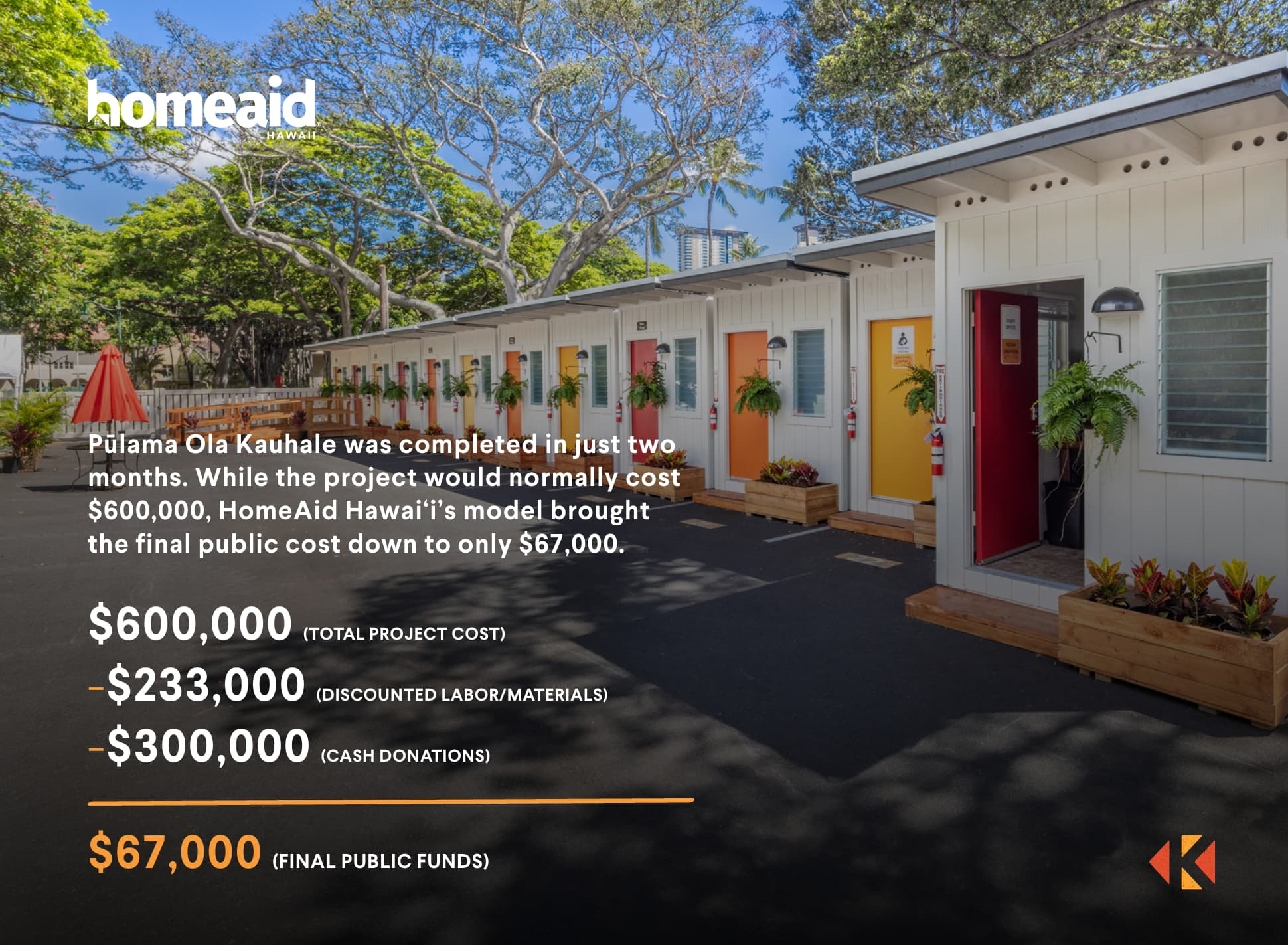In 2023, just across the street from the State Capitol, a small community of 10 tiny homes quietly reshaped how we think about housing, healthcare, and dignity.
Pūlama Ola Kauhale was Hawai‘i’s first medical respite village, created by HomeAid Hawai‘i for individuals leaving the hospital with nowhere safe to recover. It was a response to a growing crisis where patients stuck in hospital beds long after they were medically cleared, simply because they had no stable housing to go to.
Now, the Urban Land Institute (ULI) has featured Pūlama Ola in a national case study on deeply affordable, supportive housing. We’re incredibly grateful to see this story reach a wider audience.
Pūlama Ola was built with community in mind. The 10-unit kauhale offered more than just a place to stay. It provided residents with private rooms secured by smart locks, 24-hour medical support, three meals a day, clean restrooms and showers, mental health services, case management, and a sense of connection.
Each unit included a bed, ceiling fan, bedside table, and open wardrobe. Residents had access to wi-fi, phones, and tablets, along with daily assistance for medications, cleaning, and laundry. A medical team was on site around the clock, with nurses present during the day and medical assistants covering overnight. On-call doctors and nurse practitioners were available as needed.






A hygiene trailer served both residents and others in the area without access to basic sanitation. Shared community spaces and structured engagement helped foster belonging and stability.
The design was inspired by the ‘Ōhi‘a Lehua blossom, a symbol of resilience and renewal. It included ADA-compliant access, ramps, door lights, and covered walkways. The site was fully fenced and staffed with 24-hour security, ensuring safety for residents and neighbors.
What set Pūlama Ola apart wasn’t just what it offered, but how it was made possible.
The total project value was $600,000. Only $67,000 came from public funds. $300,000 came from private donations, and more than $230,000 was covered through builder discounts, donated labor, and materials.

This kind of partnership-driven funding model is at the heart of what HomeAid Hawai‘i does. By working closely with the building industry and private sector, we reduce construction costs so that more people can be served with less public burden.
The savings didn’t stop at construction. By helping people recover outside of hospitals, Pūlama Ola saved the state an estimated $6.5 million per year in Medicaid costs.
While Pūlama Ola was small and time-limited, it made a lasting impact. It showed what’s possible when housing is rooted in community and care. It offered proof that healing environments don’t have to be expensive, and that deeply affordable housing can be done differently, with results that are better for residents and more sustainable for the public.
The project also helped build momentum for the Kauhale Initiative statewide, with each new community designed to meet the unique needs of its residents and location.
We’re thankful to the Urban Land Institute for sharing this story as part of their Homeless to Housed series. Pūlama Ola may have been small, but its legacy lives on in every conversation about what housing in Hawai‘i can and should be.